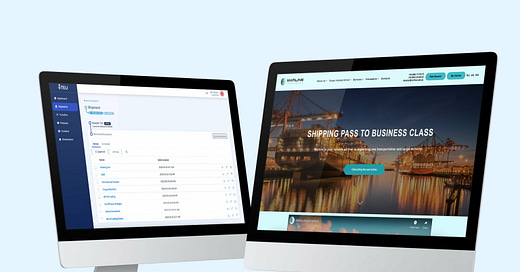The $1 Breakthrough: How eTEU Revolutionized Logistics Documentation for European Freight Forwarders
From Paper to Platform - How Marline and a Top 5 Shipping Line Slashed Time, Costs, and Risk with Electronic Bills of Lading
Introduction: The Quiet Revolution in Shipping
For centuries, the paper Bill of Lading (BL) has stood as the backbone of global trade - equal parts legal document, cargo receipt, and title of ownership. Yet in 2024, amidst digital transformation across every other business function, maritime logistics remained anchored to manual, paper-based processes.
That is, until a promising European startup, eTEU, partnered with freight forwarder Marline and a top 5 global shipping line (name withheld under NDA) to challenge the status quo.
This is not just another tech story - this is a real-world case study of how $1, one minute, and zero paperwork redefined the economics and efficiency of shipping documentation across Europe and beyond.
The Challenge: Global Trade Stuck in a Paper Past
Despite their role in trillion-euro cargo flows, traditional Bills of Lading were:
Expensive: Each paper BL cost up to $72 when factoring in printing, couriering, and manual handling.
Slow: International shipments saw up to 8 days of delay just to get the document across borders.
Risky: Paper BLs were prone to loss, fraud, tampering, and demurrage penalties.
For Shipping Line A, these challenges weren’t just theoretical - they were daily operational bottlenecks. And for Marline, a mid-sized European freight forwarder, they were existential. Entering the eBL space was too costly, even as their clients demanded more transparency and speed.
They needed a solution that was affordable, secure, interoperable, and simple enough to adopt without a months-long onboarding process.
The Solution: Digital Bills of Lading Built for Real-World Use
eTEU, built on DCSA eBL Interoperability Standards, provided just that.
Their platform enables:
Issuance and transfer of eBLs via a web browser
Legally recognized digital documentation
Full audit trails and real-time visibility
Rapid deployment with no IT overhaul
For the pilot project, eTEU digitized a $200,000 titanium sponge shipment from Ukraine to Japan, simultaneously issuing both paper and electronic BLs to measure performance head-to-head.
The Results: A Quantifiable Leap Forward
The impact was not incremental - it was transformative.
💰 Cost Savings
$1 per eBL with eTEU
vs. $72 per paper BL
→ 98.6% cost reduction
⏱ Time Efficiency
1 hour total processing time per shipment with eTEU
vs. 7 hours for paper BLs
→ 6 hours saved per shipment
⚡ Speed of Transfer
< 1 minute for digital transfer
vs. 8 days by international courier
→ Near-instant cargo release
🔐 Security & Transparency
Documents accessible on any smart device
Reduced fraud risk with blockchain-like traceability
Instant tracking and easy amendments
😌 Customer Experience
No more office visits, stamps, or post office runs
Digital access 24/7
eBLs usable as collateral for trade finance and insurance
Beyond the Numbers: Strategic Implications for Europe’s Logistics Sector
eTEU didn’t just save money - it freed up capacity, enhanced compliance, and built trust between Marline and its clients.
For small and mid-sized enterprises (SMEs), this is especially critical. Traditional eBL providers often price them out of the market or impose complex onboarding processes. With eTEU, the barriers to digitization vanish:
No hardware investment
No costly training
Immediate ROI
In fact, Marline was able to reduce office visits, eliminate manual mailing across cities and borders, and significantly reduce the administrative burden on both operations and customer support.
Conclusion: A New Standard for Smart Shipping
With eTEU, the case for digitization is no longer theoretical - it’s proven. This pilot shows that European logistics companies - regardless of size - can access cutting-edge tools to drive down costs, improve agility, and enhance the customer experience.
In an era where trade friction, geopolitical risks, and digital expectations are all rising, eBLs offer a rare triple win: for the shipper, the forwarder, and the end client.
If you’re in logistics, freight, or international trade, it’s no longer a question of if you’ll go digital - but how quickly you can afford to get there.
🔍 Curated Learnings for Practitioners
Adopt interoperable standards: DCSA eBL frameworks are becoming the industry default.
Measure side-by-side: Running digital and paper processes in parallel can ease transition fears.
Start small, scale fast: One pilot shipment was enough to reveal transformative value.
Push for ecosystem buy-in: Freight forwarders, shippers, and carriers must align to extract maximum value.




